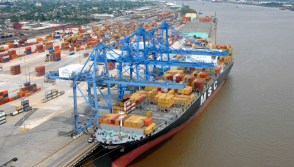Mapping collision-prone intersections in Seattle, New York and New Orleans

A study of collisions in New York, Seattle and New Orleans that relies on machine learning and predictive analytics is giving transportation departments new tools for detecting dangerous streets and intersections.
DataKind, a nonprofit that pits data against societal problems, developed analytical models for the study to estimate city traffic flows and identify elements contributing to accidents. The data measures elements like street signage, the availability of bike lanes, vehicle density and road gradients. DataKind Founder and Executive Director Jake Porway said the idea for the study germinated from the Vision Zero initiative, a national campaign that calls on cities to eliminate fatalities and serious injuries caused by traffic collisions by 2030.
“We recognized pretty early on traffic safety is an issue where folks are going to make big policy decisions,” Porway said. “There’s a lot of money and willpower behind this work, and it’s going to affect lives, future traffic conditions and a whole number of things. However, when taking this project on, I got the impression that not a lot of folks had data algorithms at their disposal to do that well.”
As participants in this initiative, the three cities invited technologists from DataKind and Microsoft to collaborate on research that analyzed both open data and internal data used by government departments. Porway said that the data allowed researchers to create a series of algorithms and models that could assess traffic environments. A core piece of this is found in the team’s “exposure model.”
“Basically, the end result is now this exposure model that kind of for the first time ever, is allowing New York, New Orleans and Seattle to estimate the number of motor vehicles on the individual streets citywide, and it also fills this void in traffic volume data that they had before.”
Confirming results, Chris Svolopoulos, a civil engineer with the City of Seattle, said the model enabled the city to build upon its own studies and deliver transportation planners a wider view of traffic activity. In 2016, the city coordinated an analysis of its intersections to determine which street and signal designs were contributing to bicycle and pedestrian collisions, while also determining the level of their their severity. The exposure model estimated high-risk areas between intersections, filling in the gaps left by the city’s studies.
“We can see locations where a disproportionate amount of collisions are occurring per bicycle and pedestrian trips in that area and we can go to those locations and better investigate why these collisions are happening disproportionately,” Svolopoulos. “On top of that, it also helps us prioritize where we should do our work.”
Community-driven data
Elizabeth Grossman, Microsoft’s director of civic projects, said the challenges and data vary significantly between cities, but researchers were able to uncover similar methods for interpreting the data.
“In New York, the number of people, the role of taxis and the adoption of bike sharing is not necessarily the same as in Seattle, where a lot of the factors measured have to do with hills, or in New Orleans, where they have a lot of pedestrians and bicyclists that are tourists,” Grossman said. “Yet, what we learned about doing a project like this is how we can take our methods and apply them to help other cities accelerate their traffic safety efforts for similar results.”
Stepping outside the analytics, Poway said a commonality that manifested itself throughout the whole process was the level of data segmentation. Researchers had to reach out to multiple departments to gain access to crucial data.
“I think there is a common need for departments to come together,” Poway said. “It’s one of the ancillary lessons that we saw with this, so much of this data was housed in departments of transportation, police departments, departments of health. And really, tackling these problems requires a lot of these cross-agency and possibly cross-sector partnerships.”
Going forward, Microsoft plans to package the models and lessons learned and offer traffic management solutions to other cities. Grossman did not say how this might happen, but it could be through Microsoft’s existing civic tech programs. The company leads projects in California, Massachusetts and New York, and it operates CityNext, a division that develops a commercial range of products for smart city solutions including transportation.
DataKind hasn’t locked in any specific plans to scale or further the study, but Porway’s team continues to collect feedback from the three cities as they investigate how the models and process might be adapted, he said.
“I think no matter what happens, we kind of want to make sure we don’t lose the community focus,” Porway said. “If there could be a way for the work that we’ve built to continue to be worked on by the community, shared by the community and improved by community that would really be a big thing for us because it’s not just about what the cool new tool is, but how are the citizens and technologists are engaging in that process.”






